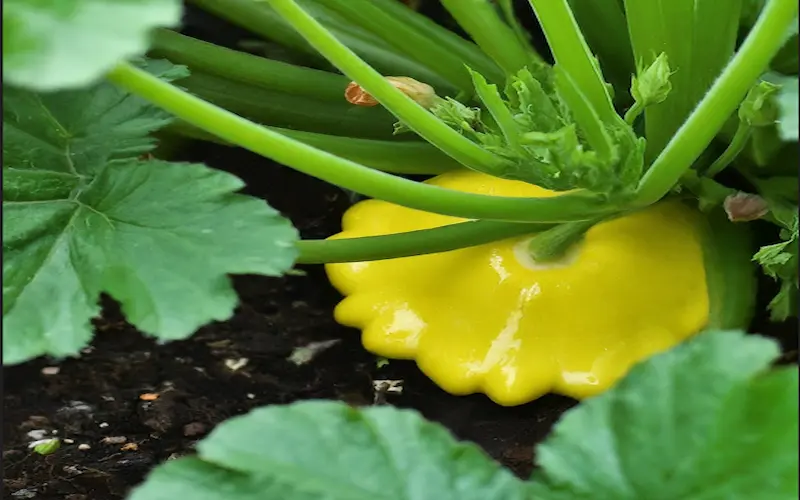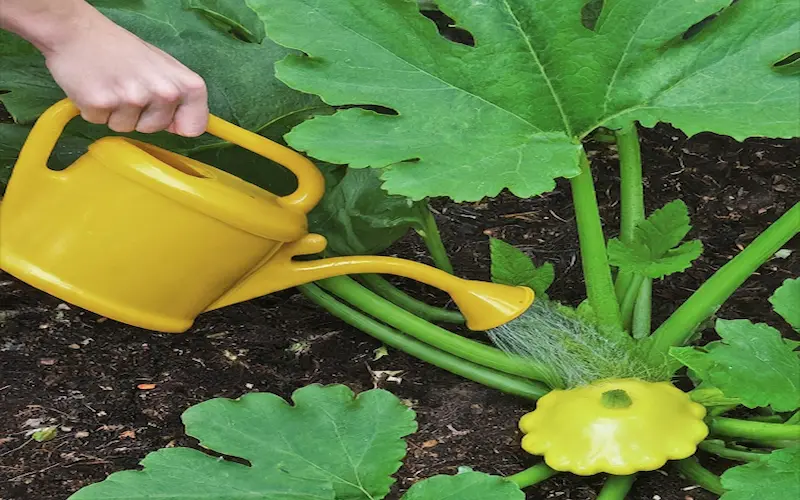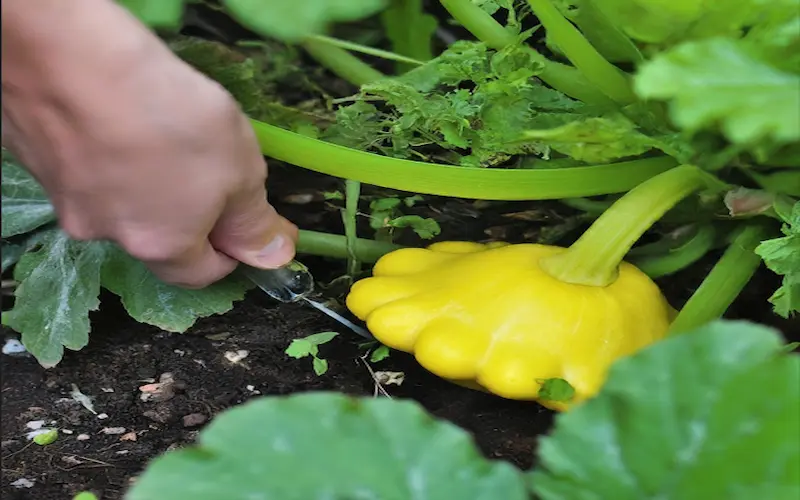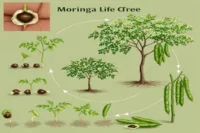A Step-by-Step Guide on How to Grow Patty Pan Squash
Published: 12 Apr 2024
Patty pan squash, also known as scallop squash or simply pattypan, is a variety of summer squash characterized by its small, round shape and scalloped edges, resembling a flying saucer or a small UFO. It comes in various colours, including white, yellow, and green, with a mild, slightly sweet flavour. Patty pan squash is harvested while still immature, making its skin tender and edible.
It can be cooked in various ways, such as sautéed, grilled, roasted, or stuffed, and it’s a versatile ingredient in many dishes. Originating from the diverse family of Cucurbits, it shares lineage with zucchini and pumpkins. In this article, I’ll guide you through growing patty pan squash from seeds, ensuring you can enjoy a bountiful harvest. This guide is designed to give you all the information about how to grow patty pan squash successfully.

| Benefits of Growing Patty Pan Squash |
|---|
Embarking on the adventure of growing patty pan squash has its myriad rewards.
|
Introduction How to Grow Patty Pan Squash
Patty pan squash, also known as acorn squash, is a popular type of winter squash. It is relatively easy to grow and can produce a plentiful harvest. To grow patty pan squash, you will need seeds or seedlings, a place to plant them, and the proper soil and growing conditions. Once planted, the squash will need to be cared for with the proper amount of sun, water, and nutrients to grow and produce fruit
Selecting the Right Location
These plants thrive in areas that receive full sunlight for at least six hours daily. The abundance of sunshine is crucial for the development of the fruits and assists in keeping the plants healthy and productive.
When choosing my patty pan squash location, I looked for a spot with well-draining soil. Squash plants do not fare well in soggy conditions, leading to root rot and other diseases. I also made sure there was ample space for the plants to spread out. Patty pan squash plants can become quite large, with sprawling vines that need room to grow.
Another consideration is the proximity to other plants in your garden. Patty pan squash plants benefit from nearby pollinators, so placing them near flowers attracting bees can help ensure a good crop. Additionally, consider crop rotation – avoid planting squash in the same spot where you’ve recently grown other cucurbits to minimize the risk of pest and disease carryover.

Preparing the Soil
Preparing the soil for your patty pan squash is a critical step that sets the foundation for healthy growth. These plants are heavy feeders, requiring fertile, nutrient-rich soil to flourish. I added plenty of organic matter, such as compost or well-rotted manure, to the planting area. This enriches the soil and improves its texture and water-holding capacity.
The soil pH is also an important factor to consider. Patty pan squash prefers slightly acidic to neutral soil, with a pH of 5.0 to 6.0. I tested the soil pH using a simple test kit from a garden centre and adjusted it by adding lime or sulfur as needed to achieve the ideal range.
I worked the soil to a depth of at least 12 inches to encourage strong root development. This deep tilling loosens the soil, allowing the roots to penetrate and spread easily. It also helps to ensure that water and nutrients are accessible to the plants, promoting vigorous growth and a bountiful harvest.

Planting Patty Pan Squash Seeds
With the soil prepared, planting patty pan squash seeds or seedlings is the next step. I started with seeds, sowing them directly into the ground after the last frost date when the soil had sufficiently warmed. I planted the seeds about an inch deep and spaced them about 2 to 3 feet apart to give the plants plenty of room to grow.
If you’re starting with seedlings, the process is similar. Gently remove the seedlings from their containers, careful not to disturb the roots. Plant them at the same depth they were growing in the container, spacing them adequately apart. Whether planting seeds or seedlings, water the area well after planting to settle the soil around the roots and provide moisture for germination and growth.
Notably, patty pan squash can be started indoors several weeks before the last frost date. This head start can be beneficial, especially in regions with a shorter growing season. However, squash plants are sensitive to transplanting, so biodegradable pots can be planted directly into the ground to minimize root disturbance.

Best Practices for Growing Patty Pan Squash from Seeds
- Once the patty pan squash plants are in the ground, they require consistent care to ensure a good harvest. Watering is one of the most important aspects, especially during dry spells. I water my plants deeply once a week, providing enough moisture to saturate the soil to a depth of at least an inch. Avoid overhead watering, which can lead to leaf diseases; instead, use soaker hoses or drip irrigation to deliver water directly to the base of the plants.

- Feeding the plants is another crucial element of care. I apply a balanced, all-purpose fertilizer every few weeks to support their growth. However, be cautious about over-fertilizing, as this can promote excessive foliage at the expense of fruit production.

- Weeding is also essential, as weeds compete with the squash plants for nutrients and water. I make it a habit to weed regularly, not to disturb the squash plants’ roots. Mulching with organic material like straw or wood chips can help suppress weeds and retain soil moisture, reducing the need for frequent watering and weeding.

Common Pests and Diseases
Like any crop, patty pan squash can be susceptible to pests and diseases. Common pests include squash bugs, cucumber beetles, and vine borers. These can be managed through vigilant monitoring and prompt action, such as hand-picking or using organic pesticides when necessary.
Diseases like powdery mildew and bacterial wilt can also affect patty pan squash. I ensure proper plant spacing for air circulation and practice crop rotation to minimize disease risk. If a plant becomes diseased, removing and destroying it is important to prevent the spread of healthy plants.
Preventative measures, such as choosing disease-resistant varieties and maintaining a clean garden, can also help keep your patty pan squash healthy. Encouraging beneficial insects and using floating row covers can provide a natural defence against pests.
Harvesting
The moment of truth in the gardening journey is the harvest. Patty pan squash are best picked when they’re small to medium in size, about 2 to 4 inches in diameter. Their skin is tender at this stage, and the flesh is at its peak flavour. I use a sharp knife or pruning shears to cut the squash from the vine, leaving a small portion of the stem attached to prolong freshness.

Storing
For storage, patty pan squash can be kept at room temperature for a few days or refrigerated for up to two weeks. If you have an abundant harvest, consider preserving the squash through pickling, freezing, or canning. Properly stored, you can enjoy the fruits of your labour well beyond the growing season.
Recipes
After harvesting, it’s time to enjoy the delectable patty pan squash in the kitchen. Their unique shape and tender flesh make them ideal for various recipes. One of my favourite ways to prepare them is to stuff the centres with cheese, herbs, and breadcrumbs, then bake them until golden and bubbly.
Another simple yet satisfying recipe is to slice the squash and grill it with a drizzle of olive oil, salt, and pepper. The grill brings out the squash’s natural sweetness, making it a perfect side dish for summer barbecues.
For a quick and healthy option, I often sauté diced patty pan squash with garlic and cherry tomatoes, tossing it with pasta and grated Parmesan for a light and flavorful meal. The versatility of patty pan squash lends itself to endless culinary exploration, from soups and stews to salads and stir-fries.
Related Questions and Answers
Can you grow patty pan vertically?
Yes, patty pan squash can be grown vertically using trellises or other vertical support structures, which can help save space and promote healthier growth.
Can you grow patty pan squash in a container?
Yes, patty pan squash can be successfully grown in containers, provided the container is large enough to accommodate the plant’s root system and proper drainage is ensured.
Conclusion:
Growing patty pan squash has been a rewarding endeavor that has enriched my garden and my table. Each process step has brought joy and challenges, from the initial selection of the perfect garden spot to the final harvest and culinary creations. As you embark on your journey of how to grow patty pan squash, remember that patience, care, and a little bit of love are the key ingredients to a successful harvest.
Whether you’re a seasoned gardener or a curious novice, I encourage you to try growing patty pan squash. Not only will you enjoy their ornamental beauty and nutritional benefits, but you’ll also be satisfied knowing you nurtured these delightful vegetables from seed to plate. Enjoy the fruits of your labor, and may your garden be abundant and your dishes delicious!

- Be Respectful
- Stay Relevant
- Stay Positive
- True Feedback
- Encourage Discussion
- Avoid Spamming
- No Fake News
- Don't Copy-Paste
- No Personal Attacks



- Be Respectful
- Stay Relevant
- Stay Positive
- True Feedback
- Encourage Discussion
- Avoid Spamming
- No Fake News
- Don't Copy-Paste
- No Personal Attacks



